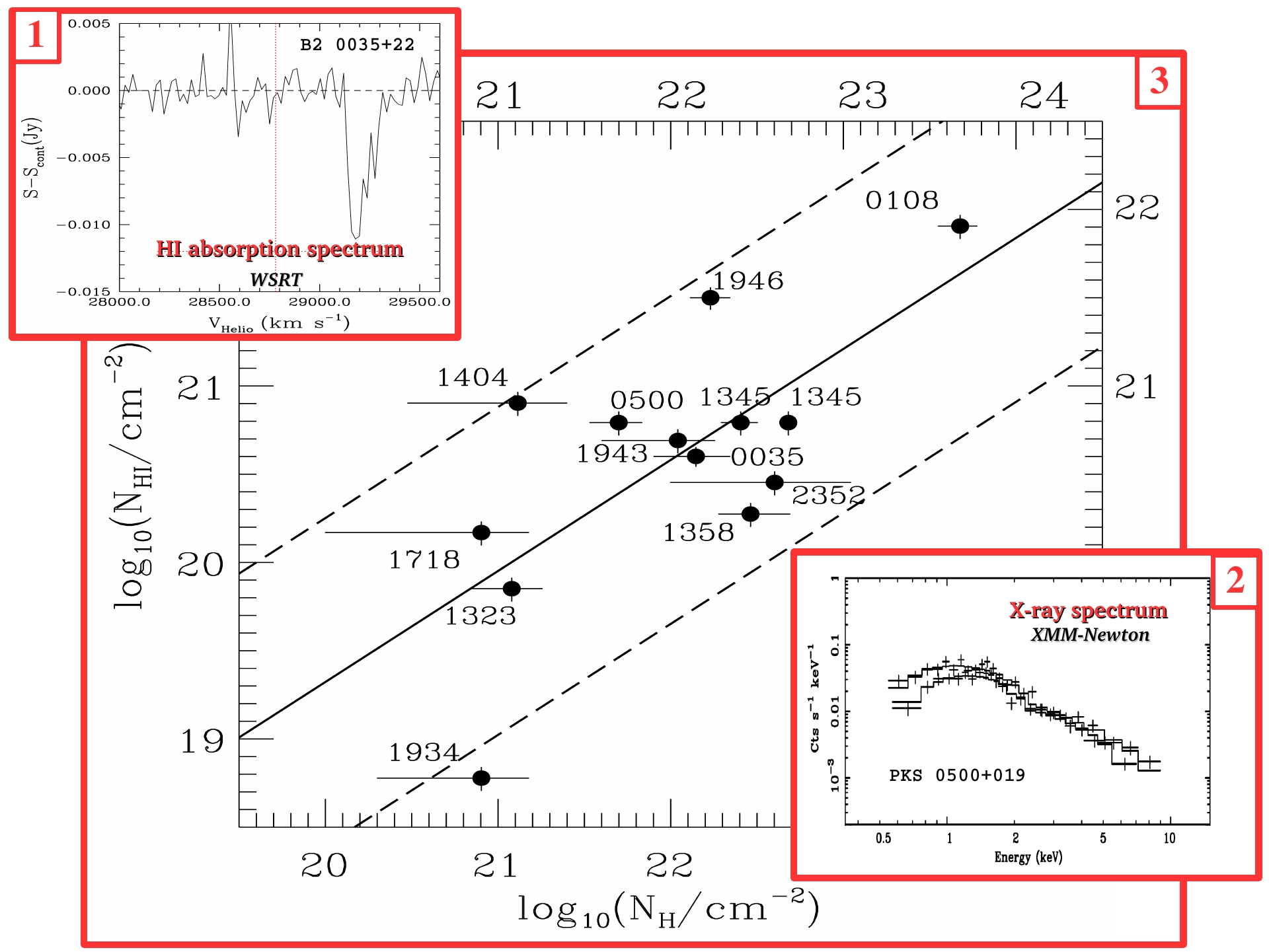Daily Image
29-11-2017Combining X-ray and HI
| Submitter: | Luisa Ostorero and Raffaella Morganti |
| Description: | The youngest radio galaxies - compact radio sources with a GHz-peaked spectrum (GPS) as well as those with Compact Symmetric Object (CSO) morphology - are fully contained in the inner regions (few thousand light years) of their host galaxies. They are in the process of expanding, and may grow grow to the size of an adult radio galaxy. They are complex systems where many different phenomena and different phases of the gas are present. Astronomers (including the authors of this Daily Image!) are still struggling to build a picture of the gaseous medium around these objects. Thanks to the sensitivity of the X-ray telescopes XMM-Newton and Chandra, more and more of such sources have been detected in the X-ray domain, suggesting the presence of large amounts of hot gas whose physical properties are still unknown. They are also often detected in HI absorption, suggesting the presence of large amounts of gas whose physical properties are unknown. They are also often detected in HI absorption, suggesting that significant quantities of cold gas is present. Can these two absorbing gaseous media be part of the same structure? Comparing the properties of the absorbing gas derived from spectral observations in the radio band (as shown in Fig. 1) with those of the absorbers detected in X-ray observations (as shown in Fig. 2) can help to statistically constrain the location of the absorbers, even with the use of low-angular-resolution observations. This, in turn, can shed light on the X-ray factory of these sources. To this aim, we investigated the relationship between radio (N_HI) and X-ray (N_H) column densities in a sample of GPS/CSOs, by combining literature data and new radio data we acquired with the WSRT through an observing plan conceived at ASTRON during a Helena Kluyver female visitor programme. The results are now presented in the paper Ostorero et al. 2017 (ApJ, 839, 34; https://arxiv.org/abs/1709.08404 ). We found that N_H and N_HI display a significant correlation (shown in Fig. 3 for the detections indicated with black symbols). This correlation tells us that GPS/CSOs with increasingly large X-ray absorption have an increasingly larger probability of being detected in HI absorption observations, and suggests that the gas responsible for the X-ray and radio absorption may be part of the same, possibly unsettled, hundred-parsec scale gas distribution. Such a scenario would imply that either parsec-scale dusty tori are not present in compact radio galaxies, or that the dominant contribution to the X-ray emission of GPS/CSOs does not originate in the accretion disc, but rather in the larger-scale jets or mini-lobes. |
| Copyright: | Copyright: Radio spectrum of B2 0035+22 and NH-NHI plot: Ostorero et al. 2017 (ApJ, 839, 34; http://iopscience.iop.org/article/10.3847/1538-4357/aa8ef6; https://arxiv.org/abs/1709.08404); X-ray spectrum of PKS 0500+019: after Guainazzi et al. 2006 (A&A, 446, 87). |
| Tweet |  |
